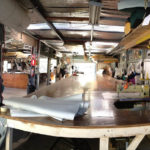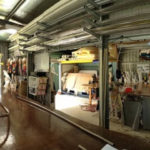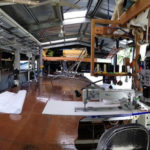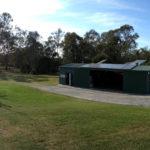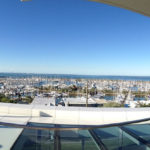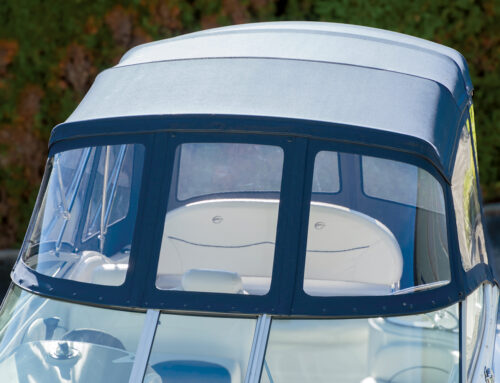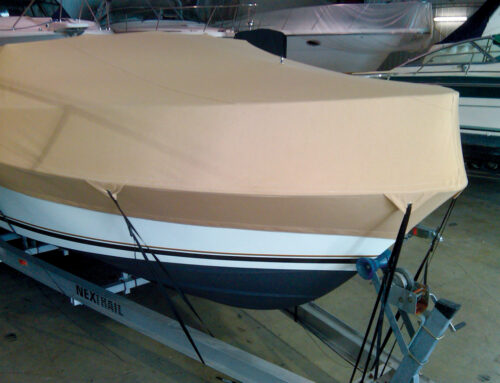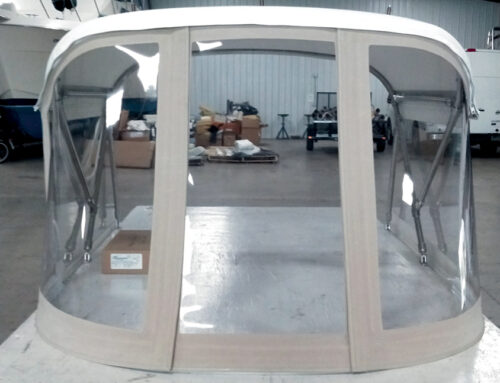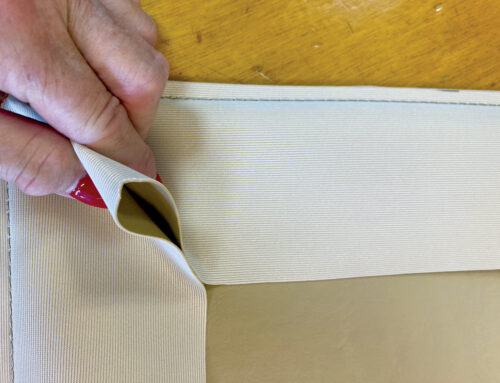Ready to share 35 years of fabrication experience
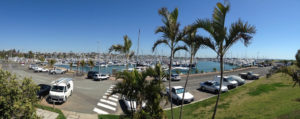
Dave Elliott’s shop is located at Manly Boat Harbour, Brisbane, Australia, where the local marina is home to four yacht clubs and 1,700 boats in the water and 400 on land.
In this series of articles, I will be introducing you to another talented fabricator, Aaron Stroud-Smith from Canvas Barn Marine Trimming, located across the country in Victoria. Aaron has taken on 95 percent of my strange methods, changing the way he fabricates and having excellent success with his end results.
Back in 1978, at 16, I started a four-year apprenticeship in Coach and Motor Body Trimming. In those days apprenticeships were four years under a “boss,” with a six-week block at Tech College for three of those years. I learned 10 times more at college than I did off my boss. During my last year at college, where I’d received honors three years in a row, my head teacher asked if I would be interested in taking on some of his customers—members of the Mercedes Benz, Jaguar and BMW car clubs of Queensland. He said my work was the “best he had seen in 20 years as a teacher,” and I was honored to be asked.
My main job for the boss at the time was automotive trimming. I had bought my own sewing machine when I was a second-year apprentice, and one of my college projects was the inside of a VW Beetle that I was rebuilding. I won places at local car shows for car interiors, and I still do specialized car interiors for some of my regular customers—custom-made leather bucket seats for a Subaru Impreza and a Ford GT show car, convertible tops, etc. All I got to do on boats with him was trimming and cutting the edges of the canopies and clears for trailer boat covers. From the third year of my apprenticeship, I was running the workshop by myself, as the boss started a second workshop. He would check in once or twice week for an hour or so.
One week out of my apprenticeship, I moved to the Bayside area of Brisbane, and started my own business. I immediately began working on boats in a big way. I was introduced to the marina manager at the Royal Queensland Yacht Squadron, as well as a boat builder whose business was in the marina and has now been there for more than 30 years.
My local marina has nearly 1,700 boats in the water and another 400 on land. There are four yacht clubs within the harbor, and there are several canal estates within 30 minutes of my workshop. There is also a marina in the Brisbane River with another few hundred berths. There are always super yachts in this marina, which has facilities to take the large boats out of the water. We are one hour north of the Gold Coast with thousands of boats and two hours south of the Sunshine Coast. I work in both these areas as well as being flown around Australia and internationally. Our boat work ranges from small tender covers through to super yachts.
Part of my insight on how to build strong solid structures came from walking around my local marina whenever the wind blew more than 25 knots. I would watch how different covers reacted as wind gusts swirled around the boats. It helped me understand how different fabrics performed in different conditions. (The strongest storm in the marina was about 15 years ago where one boat registered 115 knots and two others marked 120 knots. That’s enough to challenge any cover!) Out of all my work in the marina, I had only two grommets torn out. (The owner admitted they had replaced a broken bungee with rope, which had no give. The bungee was an integral part of the design of the suspended awning.)
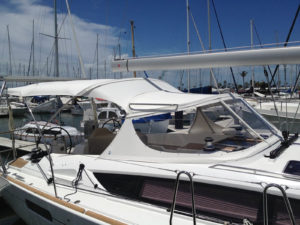
Dave Elliott has built more than a thousand dodgers in his 35-plus years as a marine fabricator.
I spent the following year replacing other fabricators’ failed covers.
For the past 10 years, I have had a constant three-month waiting list while employing three fulltime tradesmen and my wife, Andrea, who runs the office. I have an enormous amount of work because of time restrictions, but I also know through experience that employing more “tradies” would lead to loss of quality and less time for me to be hands-on.
These guidelines underpin my business and work ethic:
- Persistence, persistence, persistence.
- Do it right the first time.
- Quality first; speed will come with time.
- Never stagnate, always change and improve.
- Let the competition play catch up.
I believe part of an efficient business is maintaining a clean, highly organized workshop. No rubbish on the presentation floor and a safe workplace.
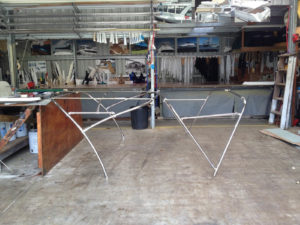
A peek inside David’s Custom Trimmers.
My involvement with the MFA brought about my decision to help Neil Hancock of Aussie Boat Covers establish a version of the association in Australia three years ago. With the help of Neil, Aaron and other committee members, we have presented three years of successful “hands-on” workshops held under the auspices of the Specialised Textile Association. We are getting attendance of 30 trimmers and 20 suppliers, and we have had to cap numbers as workshops are proving so popular.
In June 2016, the Specialised Textiles Association is holding its Expo, incorporating the Trimmers’ Workshops, on Australia’s Gold Coast. We expect many Australian and international trimmers to attend. Our industry is strengthened when we challenge each other to continually raise our standards, and the hands-on workshop setting provides a huge learning opportunity.
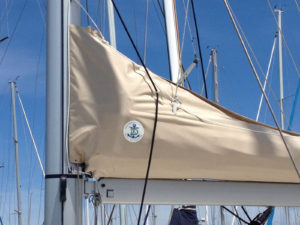
A lazy jack sail cover features Elliott’s distinctive shop logo.
Over the 35 years of my career, I’ve built about 1,200 spray dodgers, letting me test the boundaries of what is possible with design. In the coming articles, I will share some of my methods and techniques, including 3D hollowing, compound frame bending, dodger and bimini design, using old covers as patterns, lazy jack sail covers and patterning complex tender covers.
I look forward to getting started.
David Elliott owns David’s Custom Trimmers in Brisbane, Australia.
 TEXTILES.ORG
TEXTILES.ORG 


